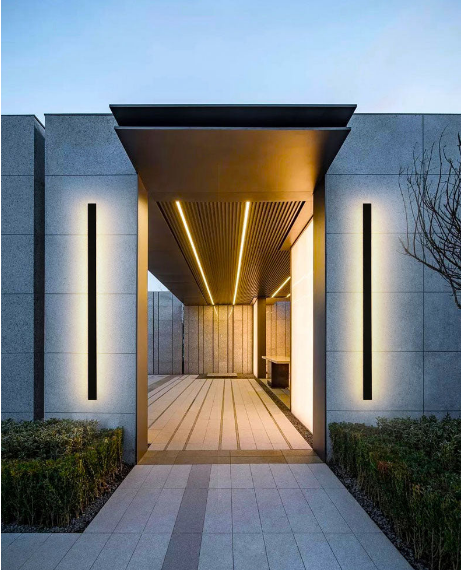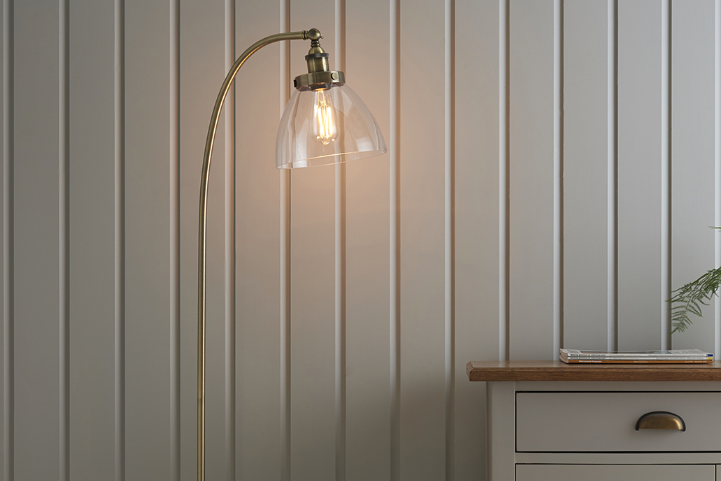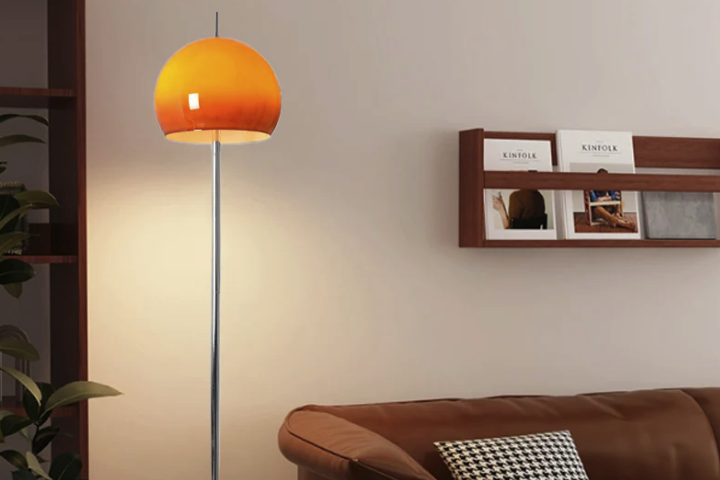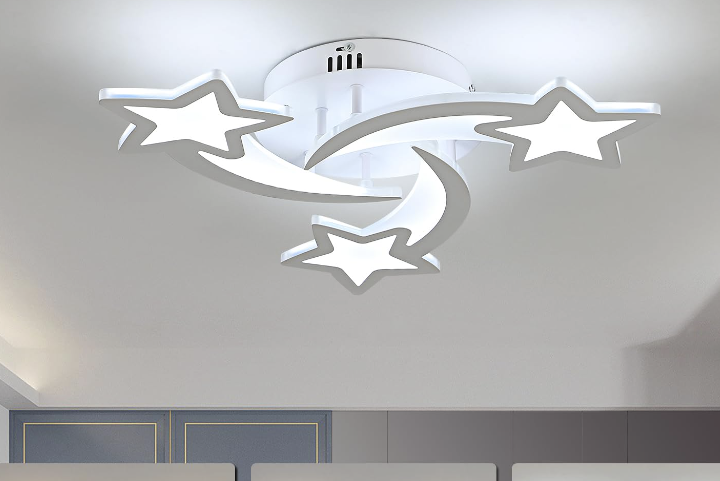Garden lighting is an essential aspect of outdoor design that often goes overlooked. However, it plays a crucial role in enhancing the beauty and functionality of your garden. Whether you have a small backyard or a sprawling landscape, the right lighting can transform your outdoor space into a magical oasis.
The importance of garden lighting addlifedecor cannot be overstated. It not only provides safety and security by illuminating pathways and entrances, but it also adds ambiance and highlights the beauty of your garden features. With the right lighting, you can create a warm and inviting atmosphere for outdoor entertaining or simply enjoy the tranquility of your garden at night.
Types of Garden Lights
There are various types of garden lights available on the market, each with its own unique features and benefits. Here are some popular options:
1. Solar lights: Solar lights are powered by sunlight and do not require any wiring or electricity. They are easy to install and environmentally friendly. Solar lights are ideal for illuminating pathways, flower beds, and other small areas in your garden.
2. LED lights: LED lights are energy-efficient and long-lasting. They produce bright, focused light and are available in a variety of colors. LED lights are perfect for highlighting specific garden features or creating a dramatic effect.
3. Halogen lights: Halogen lights produce a bright, white light that closely resembles natural daylight. They are commonly used for floodlights and spotlights to illuminate large areas or specific objects in your garden.
4. Incandescent lights: Incandescent lights are the traditional type of light bulb that produces a warm, yellowish light. They are less energy-efficient than LED lights but can still be used effectively for general lighting in your garden.
5. Floodlights: Floodlights are powerful lights that provide wide-angle illumination over a large area. They are commonly used for security purposes or to highlight architectural features in your garden.
6. Path lights: Path lights are low-level lights that are installed along pathways or walkways. They provide a soft, diffused light that helps guide visitors and adds a touch of elegance to your garden.
7. Spotlights: Spotlights are used to highlight specific objects or areas in your garden. They produce a focused beam of light that can be adjusted to create different effects.
Choosing the Right Lighting for Your Garden
When choosing the right lighting for your garden, there are several factors to consider:
1. Purpose of the lighting: Determine the purpose of the lighting in your garden. Do you want to create a cozy outdoor space for entertaining? Do you need lighting for safety and security? Understanding the purpose will help you choose the right type of lighting.
2. Amount of light needed: Consider how much light is needed in different areas of your garden. For example, pathways may require brighter lights for safety, while seating areas may benefit from softer, ambient lighting.
3. Type of light: Choose the type of light that best suits your needs and preferences. LED lights are energy-efficient and long-lasting, while halogen lights provide bright, focused illumination. Consider the style and design of the lights as well to ensure they complement your garden’s aesthetic.
4. Style and design: Garden lights come in a variety of styles and designs, from sleek and modern to rustic and traditional. Choose lights that match the overall theme and style of your garden to create a cohesive look.
How to Install Garden Lights
Installing garden lights may seem like a daunting task, but with proper planning and preparation, it can be a straightforward process. Here are the steps to follow:
1. Plan the layout of the lights: Before installing the lights, plan out where you want them to be placed in your garden. Consider the areas you want to illuminate and how many lights will be needed.
2. Prepare the area for installation: Clear any debris or obstacles from the area where the lights will be installed. Dig small trenches for burying the wiring if necessary.
3. Install the lights: Follow the manufacturer’s instructions to install the lights in their designated locations. This may involve inserting stakes into the ground, mounting lights on walls or posts, or burying lights in the soil.
4. Connect the wiring: If your lights require wiring, carefully connect them according to the manufacturer’s instructions. Use waterproof connectors and bury the wiring in trenches or conduit for protection.
5. Test the lights: Once all the lights are installed and connected, test them to ensure they are working properly. Make any necessary adjustments to the positioning or angle of the lights for optimal illumination.
Safety Considerations for Garden Lighting
When installing garden lights, it is important to prioritize safety to prevent accidents and ensure the longevity of your lighting system. Here are some safety considerations to keep in mind:
1. Use outdoor-rated lights: Make sure to use lights that are specifically designed for outdoor use. These lights are built to withstand exposure to the elements and are less likely to become damaged or pose a safety hazard.
2. Follow manufacturer’s instructions: Always follow the manufacturer’s instructions when installing and operating your garden lights. This will ensure that you are using them correctly and safely.
3. Use proper wiring and connectors: If your lights require wiring, use outdoor-rated wiring and connectors that are designed for underground use. This will protect against moisture and prevent electrical hazards.
4. Keep lights away from water sources: Avoid placing lights near water sources such as ponds, fountains, or sprinklers. Water can damage electrical components and increase the risk of electrical shock.
5. Use ground fault circuit interrupters (GFCIs): Install GFCIs on all outdoor electrical outlets to protect against electrical shock. These devices detect imbalances in electrical currents and automatically shut off power if a fault is detected.
Creative Ways to Use Lighting in Your Garden

Garden lighting offers endless possibilities for creativity and design. Here are some creative ways to use lighting in your garden:
1. Highlighting garden features: Use spotlights or uplights to highlight specific garden features such as trees, sculptures, or architectural elements. This will draw attention to these focal points and create a dramatic effect.
2. Creating a focal point: Install a statement light fixture or chandelier as a focal point in your garden. This will add a touch of elegance and create a stunning visual centerpiece.
3. Illuminating pathways: Use path lights or solar stake lights to illuminate pathways and walkways in your garden. This not only provides safety but also adds a magical glow to your outdoor space.
4. Adding ambiance to outdoor dining areas: Hang string lights or install pendant lights above your outdoor dining area to create a cozy and inviting atmosphere. This will allow you to enjoy al fresco dining even after the sun goes down.
5. Creating a cozy outdoor space: Use soft, ambient lighting such as lanterns or fairy lights to create a cozy and intimate outdoor space. This is perfect for relaxing or entertaining guests in the evening.
Maintaining Your Garden Lights
Proper maintenance is essential to keep your garden lights in good working condition and prolong their lifespan. Here are some maintenance tips:
1. Regular cleaning: Clean your lights regularly to remove dirt, dust, and debris that can accumulate over time. Use a soft cloth or sponge and mild soap to gently wipe down the lights.
2. Checking for damage: Inspect your lights periodically for any signs of damage such as cracks, loose connections, or broken bulbs. Replace any damaged parts immediately to prevent further issues.
3. Replacing bulbs: If your lights use replaceable bulbs, check them regularly and replace any burnt-out bulbs promptly. This will ensure that your lights continue to provide optimal illumination.
4. Fixing wiring issues: If you notice any issues with the wiring, such as exposed wires or loose connections, address them immediately. This will prevent electrical hazards and ensure the proper functioning of your lights.
5. Upgrading to newer models: Consider upgrading your garden lights to newer, more energy-efficient models. This will not only save you money on energy costs but also provide better illumination and functionality.
Energy-Efficient Lighting Options for Your Garden
If you’re looking to reduce your energy consumption and lower your carbon footprint, there are several energy-efficient lighting options available for your garden:
1. Solar lights: Solar lights are powered by sunlight and do not require any electricity. They are a sustainable and cost-effective option for illuminating your garden. Solar lights are easy to install and can be placed anywhere that receives direct sunlight.
2. LED lights: LED lights are highly energy-efficient and use up to 80% less energy than traditional incandescent bulbs. They also have a longer lifespan, which means fewer replacements and less waste. LED lights are available in a variety of colors and styles, making them versatile for any garden design.
3. Motion-activated lights: Motion-activated lights are a great option for security purposes or areas that are not frequently used. These lights only turn on when motion is detected, saving energy by not staying on continuously.
4. Timers and dimmers: Install timers or dimmers on your garden lights to control when they turn on and how bright they are. This allows you to customize the lighting schedule and reduce unnecessary energy consumption.
Enhancing Your Garden’s Ambience with Lights
The right lighting can greatly enhance the ambience of your garden, creating a warm and inviting atmosphere. Here are some tips for enhancing your garden’s ambience with lights:
1. Choosing the right color temperature: Consider the color temperature of the lights you choose. Warm white lights (around 2700K) create a cozy and intimate atmosphere, while cool white lights (around 5000K) provide a brighter and more vibrant look.
2. Using different types of lights: Combine different types of lights to create a layered lighting effect. Use spotlights to highlight specific features, path lights to illuminate walkways, and ambient lights to create a soft glow.
3. Creating a layered lighting effect: Place lights at different heights and angles to create depth and dimension in your garden. This will add visual interest and make your garden more visually appealing.
4. Adding decorative elements: Incorporate decorative elements such as lanterns, string lights, or fairy lights to add a touch of whimsy and charm to your garden. These decorative lights can be hung from trees, pergolas, or fences to create a magical atmosphere.
Budget-Friendly Garden Lighting Ideas
If you’re on a budget, there are still plenty of ways to add lighting to your garden without breaking the bank. Here are some budget-friendly ideas:
1. DIY lighting projects: Get creative and make your own garden lights using inexpensive materials such as mason jars, tin cans, or wine bottles. There are plenty of DIY tutorials available online that can guide you through the process.
2. Using string lights: String lights are an affordable and versatile option for adding lighting to your garden. Hang them from trees, fences, or pergolas to create a warm and inviting atmosphere.
3. Repurposing household items as lights: Look around your home for items that can be repurposed as garden lights. For example, old lanterns, candle holders, or even Christmas lights can be used to create unique lighting fixtures.
4. Shopping for sales and discounts: Keep an eye out for sales and discounts on garden lights. Many retailers offer seasonal promotions or clearance sales where you can find great deals on lighting fixtures.
5. Renting lights for special occasions: If you’re hosting a special event in your garden, consider renting lights instead of purchasing them. This can be a cost-effective option, especially for one-time use.
In conclusion, garden lighting is an important aspect of outdoor design that can greatly enhance the beauty and functionality of your garden. With the right lighting, you can create a warm and inviting atmosphere, highlight garden features, and add a touch of magic to your outdoor space. Whether you choose solar lights, LED lights, or other types of garden lights, it is important to consider the purpose, amount of light needed, and style of the lights. Proper installation and maintenance are also crucial for safety and longevity. By following these tips and getting creative with your lighting choices, you can transform your garden into a stunning oasis that can be enjoyed day and night.





